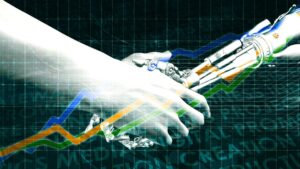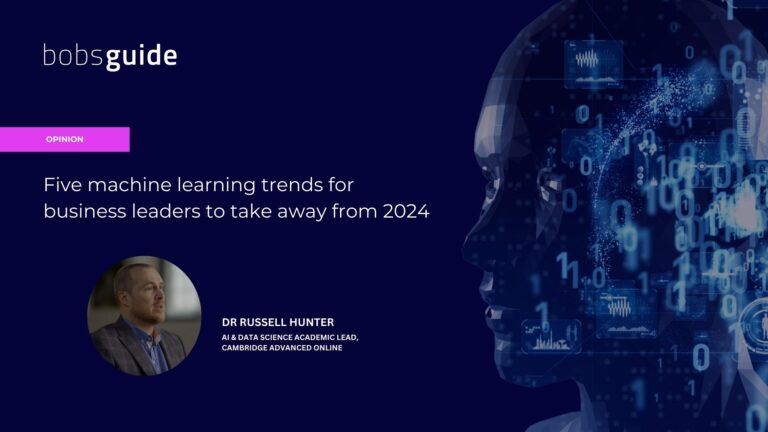As AI and machine learning transform industries, it’s important for business leaders to stay ahead of the curve. According to IBM, 42% of enterprise-sized companies are currently using AI, and machine learning is driving significant change. From operating ML systems to autonomous decision-making, here are the top five ML trends that will shape the future and help businesses stay competitive in 2024 and beyond.
As artificial intelligence (AI) and machine learning (ML) dominate headlines and reshape industries, they’re more than just buzzwords; they’re reshaping the way we work. These technologies are expected to continue to evolve and further impact various aspects of our lives.
IBM’s latest global AI adoption index We found that 42% of enterprise-sized companies claim to be actively implementing AI in their business. This is the same number of companies that were still considering using AI in the previous year. As 2024 draws to a close, here are the top ML trends business leaders need to know as they navigate this rapidly evolving landscape.
ML operations management (ML Ops for short) focuses on the deployment, monitoring, and governance of ML models in production environments. In the early stages of innovation work in this area, there were concerns about performance drift, managing multiple variations of models, and retraining on new data without impacting the business.
This is the kind of problem that ML Ops can solve by integrating best practices from established practices in DevOps to ensure reliable and scalable operation of ML systems. As companies expand their AI capabilities, standardizing and streamlining ML workflows with ML Ops has become essential. This trend solidifies its position in the industry and enables faster deployment and maintenance of ML models.
-
autonomous decision making
These advanced systems are transforming industries by accelerating the speed and accuracy of decision-making, increasing efficiency, and improving the customer experience. By automating manual processes, ML technology can improve a company’s ability to rapidly analyze large amounts of data while uncovering patterns and making informed decisions.
Sophisticated multimodal AI analyzes genetic data and patient medical history to recommend personalized treatment plans. This will lead to more effective and personalized healthcare. Similarly, by leveraging data from electronic medical records, these systems can predict patient outcomes and complications, enabling proactive interventions.

As AI continues to grow and advance, the required computational resources must also increase exponentially. This pioneering field is particularly important for high-stakes industries such as finance and pharmaceuticals, IBM and google.
quantum AI Unconstrained by traditional computing, it potentially allows for more accurate and complete models. Although this is more speculative about the future, it is an exciting frontier and has the potential to solve problems that are beyond the reach of classical algorithms.
Another cutting edge development, Edge AI This provides instant processing capabilities that are critical for applications such as self-driving cars, industrial automation, and healthcare monitoring that require rapid response to time-sensitive tasks. This is achieved by processing data locally on the device, reducing latency, enabling real-time decision-making, and minimizing the amount of data that needs to be sent to a central server.
Processing sensitive information locally also increases privacy and security, reducing the risk of data breaches in transit. However, challenges such as hardware limitations, integration complexity, and the need for efficient management and maintenance of large numbers of edge devices reduce the full effectiveness of edge AI.
While there are concerns that AI will replace humans in the workplace, the latest AI developments have the potential to enhance rather than undermine human contributions. The workforce augmentation trend leverages AI to support rather than replace human workers, transforming job roles and increasing productivity across various sectors.
This human-AI collaboration combines the best of both worlds, allowing AI to handle repetitive and data-intensive tasks while humans can handle strategic and creative tasks that require emotional intelligence and critical thinking. , you will be able to concentrate on interpersonal activities. Rather than eliminating jobs, AI will reshape them and lead to the creation of new roles that require management, programming, and collaboration with AI systems.

As business leaders, it’s important to stay tuned to these trends and ensure your organization is fully prepared to leverage AI and ML to gain an advantage.
To learn more about these insights and additional trends, read Dr. Hunter’s book. Machine Learning Trend Analysis for Cambridge Advance Online Blog.
Dr. Russell Hunter is an academic leader in AI and data science. cambridge advance onlinean online short course provider at the University of Cambridge. Dr. Russell He holds a PhD in computational neuroscience and moved from academia to industry, currently working as a technical lead in web development, serverless architecture, and machine learning. After eight years as a postdoctoral researcher at the University of Cambridge, developing educational apps for future engineers, his career spans lecturing in software engineering, image processing, edtech, and computer science.


